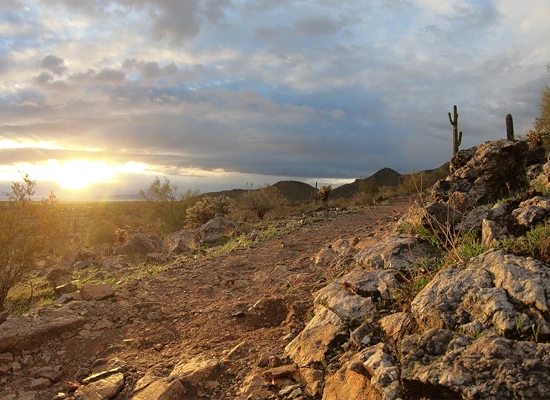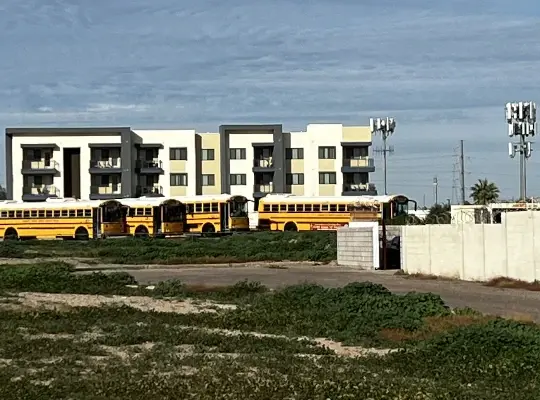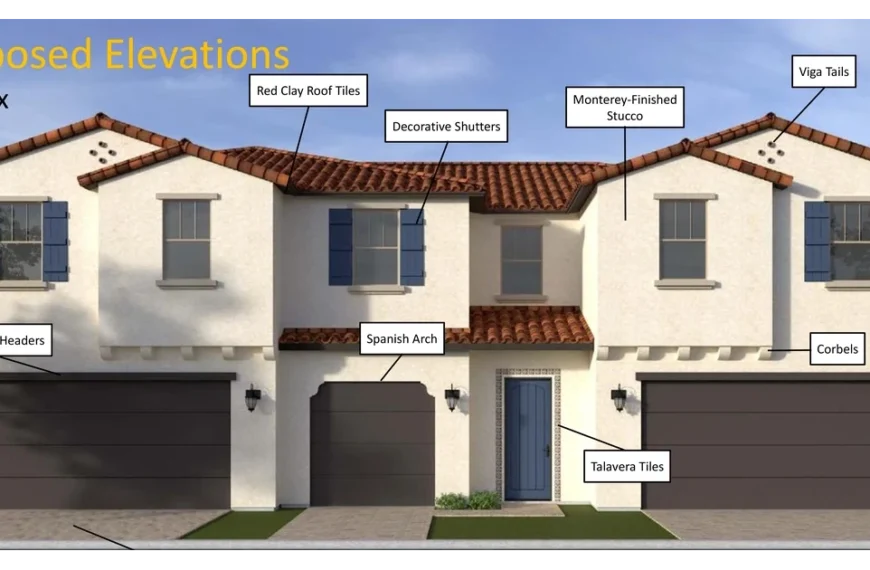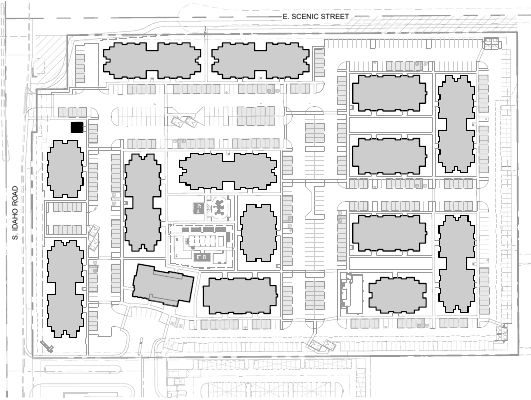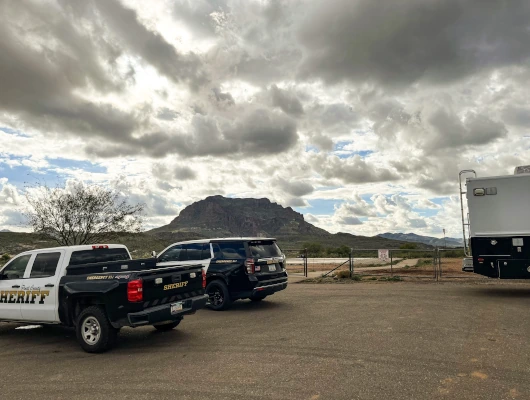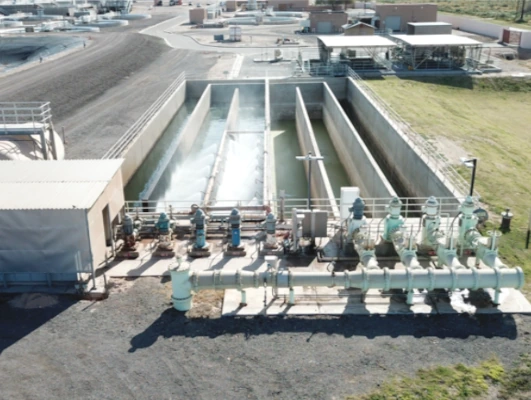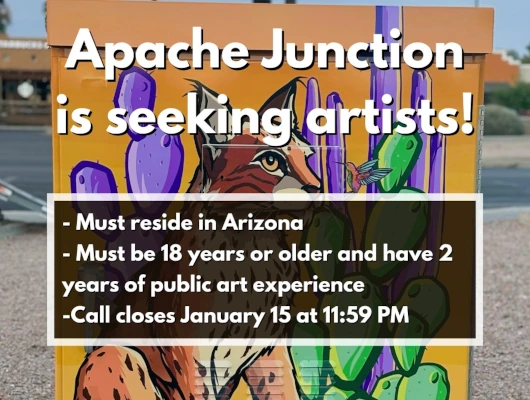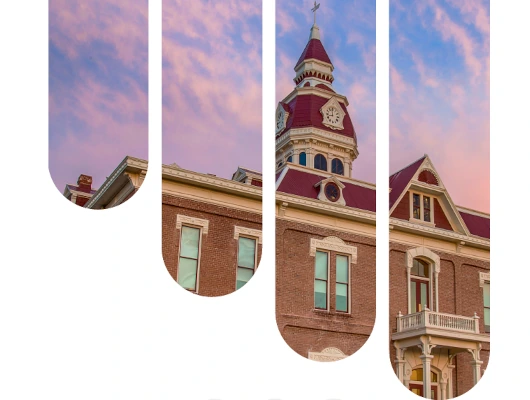Key Points
- Casa Grande City Council voted unanimously on September 2, 2025 to preserve 304.5 acres of city-owned land as open space.
- The land, once tied to a decades-long option contract for potential development, is now officially part of Casa Grande Mountain Park.
- The decision expands the city’s open space by 10%, aligning with the 2030 General Plan goal of enhancing parks and trail systems.
- The new Open Space designation permanently prevents residential and commercial development, while UR zoning provides the legal framework for parkland.
- Residents and community groups voiced strong support, citing recreation, scenic beauty, and long-term preservation of a signature landmark.
- Casa Grande Mountain Park now protects over 2,450 acres for hiking, biking, and outdoor recreation.
The Casa Grande City Council unanimously voted September 2, 2025 to preserve an additional 304 acres of city-owned land as open space, officially incorporating 304 acres of land already used for mountain recreation into Casa Grande Mountain Park and ensuring the area remains protected for recreation rather than residential development.
The council’s decision represents a 10 percent increase in the city’s Open Space designation while reducing the Neighborhoods category by less than 1 percent. This significant expansion of protected recreation land positions Casa Grande Mountain as the centerpiece of the city’s outdoor recreation offerings.
The Agenda Items
The council considered two related items that evening. Item L1 was a minor general plan amendment changing the land use designation of the 304.5-acre property from “Neighborhoods” to “Open Space.” Item L2 involved rezoning the same property from its current Planned Area Development (PAD) status to Urban Ranch (UR), matching the zoning of the existing mountain park. In simpler terms, the city was changing how the land could be used – moving it from a complex development plan that allowed houses, shops, and businesses to a simpler designation that keeps it as natural open space for recreation.
The blue shaded area in the image below shows the city-owned portion of Casa Grande Mountain Park, which currently encompasses approximately 1,350 acres located entirely within city limits.

An additional 800 acres shaded yellow and to the west, owned by the state but within Pinal County jurisdiction, provides accessible recreation space that users often don’t realize extends beyond city boundaries. Together, these 2,150 acres were already designated as open space in the city’s general plan.

The 304.5 acres in question sat outside the official park boundaries and general plan open space designation.

Until recently, this city-owned land was reserved under a contract to sell to a private owner, who would likely have sold it to developers for various uses. The property currently carries PAD zoning as part of the larger Casa Grande Mountain Ranch / Dream Port Villages South development, outlined in yellow below.

The Dreamport Villages name referenced an ambitious 1,500-acre theme park and resort development that received city approval in 2017 but was never built. The name was later changed back to Casa Grande Mountain Ranch PAD in 2019 at George Chasse’s request, though the development standards remained unchanged.
City as Applicant
During the planning process, city staff clarified that the City of Casa Grande served as the applicant for both the general plan amendment and zone change. Senior Planner Jim Gagliardi confirmed, “We are the applicant.”
This arrangement reflects the city’s ownership of the property and its decision to pursue preservation rather than continuing with the previous development-oriented contracts.
The Chasse Option Contract History
The 304.5 acres at the center of the preservation decision were subject to a decades-long option contract between the city and Casa Grande Mountain Ranch Limited Partnership, led by George Chasse. This arrangement began in 1988 when the city entered into a Land Purchase Agreement allowing the Partnership to acquire approximately 378 acres on the northeast side of Casa Grande Mountain through an option agreement.
Over 37 years, Chasse’s Partnership made substantial financial commitments to this contract. By 2021, the Partnership had paid a total of $1,257,663 in option payments to the city and had already purchased 76 acres for $580,443. The original agreement underwent multiple amendments, with the city extending the option period several times. In 2019, the option was extended through June 30, 2021, and in 2021, the city granted a fourth amendment extending the deadline to June 30, 2022.
The 2021 extension required additional monthly payments of $2,500 and the conveyance of 10 acres of trail-adjacent land to the city. However, the Partnership was unable to complete the purchase by the June 30, 2022 deadline. With the option contract expiring, the city retained ownership of the remaining 304.5 acres.
Under the existing PAD zoning that would have applied if the contract had been completed, the 304.5 acres were entitled for various uses:
- ±96 acres designated for low-density residential development allowing up to 4.5 dwelling units per acre
- ±78 acres for very low-density residential at one dwelling unit per acre
- ±16.76 acres for medium-density residential up to 12 dwelling units per acre
- ±14 acres for commercial areas, and ±7 acres for a campus tech park. Additionally
- ±92.5 acres within the PAD were designated as open space, though this would primarily serve residents of the development rather than the general public.


Land Use Changes and PAD Implications
The land use designation change from “Neighborhoods” to “Open Space” represents a significant shift in how the property can be used. The Neighborhoods designation primarily supports low-density single-family residential areas but also allows limited neighborhood-scale commercial development and multifamily residential at densities up to 24 dwelling units per acre.
Open Space designation, by contrast, permanently preserves natural areas for visual and recreational benefits. As Senior Planner Jim Gagliardi explained to the council, “The open space land use designation does allow limited development such as park shelters, water storage, cell towers to take advantage of the grade in that area. However, it isn’t conducive or appropriate to support other types of commercial or residential development.”
The zone change from PAD to Urban Ranch removes the property from the larger planned development and aligns it with the rest of Casa Grande Mountain Park. While Urban Ranch zoning typically allows very low-density housing, the Open Space designation overrides this and prevents any residential or commercial development. The Urban Ranch zoning simply provides the legal framework needed for land designated as Open Space.
These changes align with the city’s 2030 General Plan, adopted by City Council in 2021. The plan specifically identifies Goal O-4 for expanding the city’s network of open spaces, parks and trails, including action steps to target properties adjacent to Casa Grande Mountain for open space expansion and to develop scenic corridors connecting large parks with multi-use trails. The plan identifies specific strategies for open space preservation and recreational development around Casa Grande Mountain.
The Planning and Zoning Commission had unanimously recommended both items to the City Council during their July 3, 2025 meeting.
Public Input and Community Response
The council chambers were packed with residents for the public hearing, with many people speaking overwhelmingly in favor of preserving the land as open space. Speakers emphasized the mountain’s role as a unique recreational asset that distinguishes Casa Grande from other desert communities.

Debbie Mumme, representing the junior high and high school mountain bike racing team, described Casa Grande Mountain as “our diamond in the rough” where athletes have trained since 2013. She noted that former team members have become Marines and other community leaders, crediting their mountain experiences with building character. “There’s nothing better in this area when you’re riding through there at night and you see a silver fox or javelina,” Mummy said, advocating against “more concrete coming in.”
Eric Wilkey highlighted the mountain’s elevation as irreplaceable, noting that while Casa Grande has abundant developable land, none offers the unique topography and scenic beauty of the mountain. He emphasized economic benefits including enhanced property values, tourism attraction, and mental health benefits for residents seeking outdoor recreation and stress relief.
Kent Taylor, a 30-year Casa Grande resident who has volunteered extensively on mountain projects, called the decision a “legacy” choice. He argued that some things “just aren’t for sale” and urged the council to preserve this signature natural resource for current and future generations.
Multiple speakers, including mountain bikers, hikers, and trail stewards, described the mountain as a regional destination that attracts visitors from throughout Arizona and beyond. They emphasized volunteer efforts to build and maintain trails, with some individuals contributing thousands of hours to the project over decades.
While support for preservation was overwhelming, some residents raised concerns about what potential development would have meant for the community. Marsha Hindman, who lives across from the park, questioned water availability, electrical capacity, traffic impacts on local roads, and the adequacy of schools and grocery stores to serve additional residents. She emphasized the importance of preserving desert landscaping and natural beauty rather than introducing non-native vegetation.
Others noted existing traffic congestion at the Arica Road intersection with Sunland Gin Road, which serves as the primary access point to the mountain’s southern trailhead.
Property Owner’s Position
Jack Gilmore, representing property owner George Chasse, requested a postponement to continue negotiations with what he described as three national entities seriously interested in developing both sides of Interstate 8 as a master-planned community. Gilmore emphasized that Chasse supported open space and trail systems but believed private development could fund improvements like trail heads, restrooms, and parking while still preserving significant acreage.
Gilmore argued that the master-planned community concept could provide enhanced amenities while maintaining trail connections that originally attracted Chasse to the property. He noted that Chasse had donated three acres to the city in the past to ensure continuous trail connectivity around the mountain.
However, the council ultimately decided to proceed rather than delay the decision. Mayor Pro-Tem Matt Herman acknowledged Chasse’s positive relationship with the city but noted that “times are changing” and emphasized the community’s clear preference for preservation.
Future Implications
The preservation ensures that existing trails within the 304.5 acres will remain accessible to the public. Mountain bike groups and other volunteers have already established and maintain trail networks throughout this area, including beginner-friendly routes that connect the mountain’s north and south sections.
Planning staff noted that the Arica Trailhead, one of the mountain’s primary access points, is actually located within the newly preserved area rather than on the existing park property. The Community Services Department, which manages the mountain park, already maintains this area with help from volunteer groups.
With this expansion secured, Casa Grande Mountain Park will offer over 2,450 acres of preserved open space for hiking, mountain biking, trail running, and other outdoor activities. The decision ensures this recreational asset remains available to residents and visitors while protecting the natural desert environment and scenic mountain views that define the community’s southern gateway.
